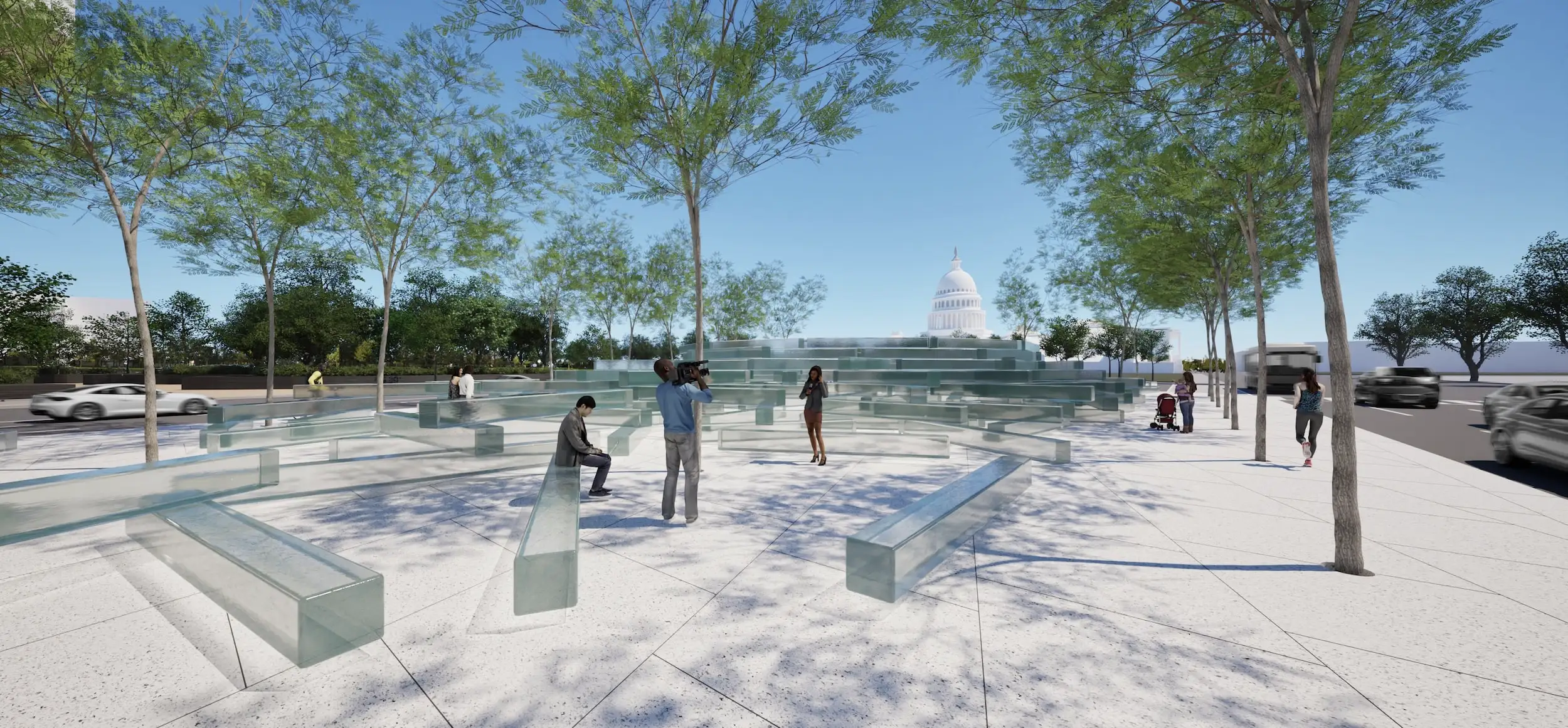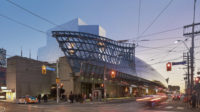Fallen Journalists Memorial Foundation Shares Images of John Ronan’s Winning Design Concept
.jpg?1726625905)
Architects & Firms
In observance of Constitution Day, the foundation behind a planned public memorial in Washington, D.C., honoring journalists, photojournalists, and media workers who have lost their lives while “in search of the truth” has unveiled an initial set of renderings depicting the design concept. Later this week on September 19, that design, by John Ronan Architects (JRA), will be presented to the U.S. Commission of Fine Arts; review by the National Capital Planning Commission is slated for October 3. To be located on a triangular, one-third-of-an-acre plot opposite the National Museum of the American Indian and the Wilbur J. Cohen Building (longtime home to international radio broadcaster Voice of America), the future Fallen Journalists Memorial is the first commissioned memorial project for JRA and the first memorial in D.C. that will be realized almost entirely with glass—a material that JRA founding principal John Ronan tells RECORD “responds to the issue of transparency.”
“Journalists shed light on things in darkness, clarifying factual distortions, explaining things that are difficult to comprehend, and making what is opaque become clear,” Ronan explains. “I wanted the memorial to address these themes of transparency, clarity, and light.”
.webp)
The triangular memorial site, which will be open to visitors approaching from all sides, along Independence Avenue. Image by JRA, courtesy FJMF
Chicago-based JRA was selected by the non-profit Fallen Journalists Memorial Foundation (FJMF) for the project in March of this year following a year-long search process helmed by a 10-member design committee. Led by critic Paul Goldberger, the committee considered 50 submissions, ultimately narrowing down the proposals to a four-team shortlist of JRA, Höweler + Yoon, MOS with Hood Design Studio, and NADAAA. “He was able to translate rather abstract ideas into something that we found extremely beautiful and very compelling,” says FJMF president Barbara Cochran of Ronan’s concept. The foundation was established in 2019 on the one-year anniversary of the mass shooting at the Capital Gazette newsroom in Annapolis, Maryland. The FJMF received congressional authorization a year later to design and build the privately funded Fallen Journalists Memorial, which, when completed, will operate under the auspices of the National Park Service.
While the memorial site—located within a one-block margin flanking the National Mall referred to as Area One—is compact and irregularly shaped, the location is prominent and highly trafficked, with a full view of the dome of the U.S. Capitol. This was an important factor in Ronan’s concept, which underpins the watchdog role that journalists play in a functioning democracy.

Featuring scattered cast-glass elements that become denser toward the center of the site, the memorial concept has dedicated space for live TV shots. Image by JRA, courtesy FJMF
The proposed design, a layered and seemingly disordered assemblage of cast glass bars oriented around a cylindrical central space at the heart of the site dubbed the Remembrance Hall, does not feature a formal front or back, giving the space a mysterious quality in which visitors can enter from multiple points on all sides. “I didn't want the memorial to be a formal object for people to look at—I wanted it to be experienced,” says Ronan. “I thought of it as a journey of discovery that would unfold slowly, space by space, like a journalist’s story unfolds line by line. This casts the visitor in the role of investigative journalist pursuing the truth.”
“As the visitor is drawn into the memorial, the glass elements will increase in upward density, like facts in a story, and then at night, we will softly up-light the glass elements, so that the whole Memorial becomes a beacon of truth,” Ronan adds.
A series of paths will weave throughout the memorial site, with a grove of trees providing shade and seasonal interest. Some of the glass elements will provide bench seating. Within the Remembrance Hall, a circular glass “lens” embedded into the ground will feature the text of the First Amendment. Other planned programmatic spaces include a field trip–ready “classroom” where school groups can gather and a “press room,” envisioned as an area for reporters to conduct live shots with the Capitol visible in the background. And while the individual glass bars throughout the space will not be inscribed with the names of slain journalists, they will be laser-etched with quotes that underscore the vitality of a free press.
The density of the glass elements— each weighing more than a ton—will also help to mute the roar of traffic from Independence Avenue and Third Street SW, creating what Ronan calls “a more contemplative atmosphere inside the Remembrance Hall—the elements help to mitigate both the visual and auditory environment.”
.webp)
A circular glass element in the center of the memorial features the text of the First Amendment. Image by JRA, courtesy FJMF
Cochran says that the FJMF hopes to gain final approval for the memorial by mid-2025, with the goal to kick off construction in 2026 and dedicate the space in June 2028 to mark the tenth anniversary of the Capital Gazette shooting. The foundation has set a funding goal of $50 million, which not only includes construction costs but kickstarts an endowment for educational and programming efforts after the memorial has been completed and conveyed to the National Park Service. Thus far, $23 million in funding commitments have been secured.




